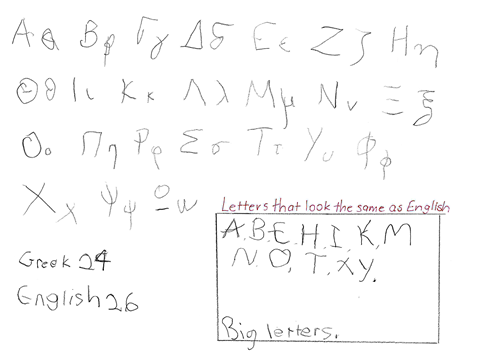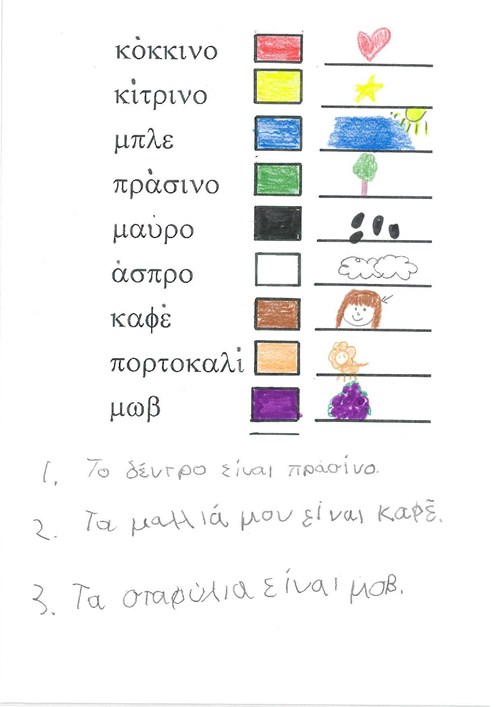By the end of Year 2, students interact with teachers and peers through action-related talk and play. They introduce themselves, (for example,Καλημέρα, Mε λένε Γιώργο) and their family and exchange greetings, farewells, (for example, Γεια σου, Kαληνύχτα) and express thanks such as Eυχαριστώ πολύ. They use simple, repetitive language when participating in shared activities and simple exchanges, respond to simple instructions such as, Έλα εδώ, and imitate frequently used classroom language, for example, Όλοι μαζί, Mπράβο, Kλείσε την πόρτα. When speaking, they reproduce distinctive sounds and letters of the Greek language such as, γ-γάτα, ρ-νερό, μπ-μπαμπάς, ξ-ξέρω, ψ-ψάρι, ου-μου. Students identify specific words, such as names of people (for example, Ο Γιάννης), places (for example, το σχολείο) or objects (for example, η γόμα), in simple spoken and written texts and respond to imaginative experiences through singing and performing. They present information about themselves (for example, Το σκυλάκι μου), their family (for example, Να η γιαγιά μου), friends (for example, οι φίλοι μου) and possessions such as, το βιβλίο μου, using gestures and modelled language. They create simple texts, such as captions to images, using familiar words, phrases and sentence patterns (for example, Σ’ αγαπώ μαμά). They use vocabulary related to their classroom and family (for example, Η οικογένειά μου, Η τάξη μου). They recognise questions such as, Τι κάνετε; and commands such as, Καθίστε κάτω, and use short sentences with appropriate word order, verb forms and personal pronouns to communicate about themselves, their family and classroom (for example, Είμαι έξι, Να η μαμά μου, Να το σχολείο μου). They translate frequently used words and simple phrases relating to their immediate environment, using visual cues and identifying similarities and differences. They give examples of ways the Greek language sounds and looks different from other languages that they bring to the classroom.
Students identify how letters of the Greek alphabet are represented in words and read vowel–consonant combinations (for example, τα, τε, τη, τι, το, τυ, τω). They identify features of familiar texts such as songs, labels and captions. They provide examples of the different titles and greetings that are used to address people in different situations (for example, κύριε, κυρία). They list different languages that are spoken in Australia and identify words in English that have been borrowed from Greek and vice versa. They identify similarities and differences between Greek and their own language and culture.





